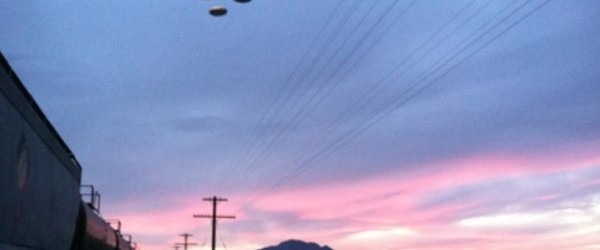
A Tweetworthy Book Review: The Restricted Airspace of “Dreamland”
Books, Reviewsa book review inspired by twitter
“Dreamland” by Phil Patton is a literary M.R.I. of a place, only 83 miles from Las Vegas that didn’t officially exist for a long time.
The book explores the mystery surrounding an area in the desert reaches of southern Nevada that’s been the subject of endless speculation.
The place encompasses 4,742 square miles of restricted airspace and 4 million acres of bomb range. It has multiple appellations.
What you called the place revealed what you thought was flying there, and told who you were.
If you worked for Lockheed Skunk Works, you’d call it the Paradise Ranch or the Remote Location.
Military pilots from the neighboring Nellis AFB called it the Box. To U.F.O. buffs, it was Area 51. It’s also called Groom Lake by some.
Groom Lake isn’t a water body, but a dry lake with hard, white caliche soil. On its edge is an ultra-secret U.S. military base: Area 51.
Area 51 lies within the Nevada Test Site and Training Range, part of Nellis AFB. But, its airstrip is overseen by the Edwards AFB.
It shares a border with the Nevada Test Site’s Yucca Flat region, the site of 739 U.S. nuclear tests.
Inside Area 51 is a classified flight-test facility and a runway, where the military’s and the CIA’s experimental aircraft were test-flown.
Dreamland encloses the airspace directly over Groom Lake, the military base at its edge, and the airstrip within the base.
At Dreamland, the cultures of U.S. air power, nuclear might, folklores of extraterrestrials, Cold War stratagems interfaced and merged.
Jointly run by the DOE and the Air Force, Dreamland is where things overlapped: geographic terrains, ideologies, jurisdictions, visions.
The area was cloaked in so much secrecy that very few outside the U.S. government had heard of it until 1989.
The first time the American public heard the word “Dreamland” was on Oct. 14, 1988, on a Fox TV program called “U.F.O. Cover-Up? Live!”
In 1989, when a man named Bob Lazar said he’d worked on captured flying saucers at Area 51, the place began to draw huge crowds.
Above Dreamland, he said, strange flying objects appeared, hovered, glowed, and disappeared.
The “Black Mailbox,” a mailbox near the milepost 29.5 of Highway 375, he said, was the perch from which saucers could be best viewed.
He said he’d seen 9 types of saucers, powered by means of a “gravity-wave generator” and ran on “Element 115,” a heavy, rust-colored fuel.
He also claimed he saw an alien book. Its pages were translucent so one could see deep into it. It described humans as “containers.”
He told enthusiasts about the exact location and time—Wednesday nights—of saucer appearances.
By 1989, Lazar made Area 51 a shrine for U.F.O. buffs. Rachel, a small town not far from there, also began to attract hordes of tourists.
That very year, the Rachel Bar & Grill was taken over by Joe and Pat Travis and rechristened as A“Le”Inn. More interest grew.
Till 1984, Area 51 was quite accessible. But, after knowledge of its existence began to trickle out, the Air Force clamped down on visitors.
Post-1984, one could see Area 51 from 50 miles or so away, from an elevation called Freedom Ridge.
Freedom Ridge’s value grew not out of how much of the base it let you see, but how little. Thus, it let you dream, imagine, fantasize.
Folklore and superstition begin where science and knowledge end. And knowing stopped at the perimeter around Dreamland, Patton points out.
The 1980s saw a spike in alien abduction tales. Personal stories with the theme “I was taken because I am special. I was abused” abounded.
But, these narratives weren’t new. They’d been heard before, between the 1940s and early 1950s, and coincided with the flying saucer mania.
On the afternoon of June 24, 1947, pilot Kenneth Arnold reported seeing 9 objects near Mt. Rainier, Washington.
They were shaped like boomerangs or flying wedges, he said, flying in loose formation, moving at tremendous speeds.
After landing in Pendleton, Oregon, he told Nolan Skiff, an East Oregonian writer, what he’d seen. He said the objects flew “like” saucers.
The AP picked up the story. In its version, it changed the wording from flying “like a saucer” to “saucer-like” objects.
That further mutated to “flying saucers,” and began to appear as such in new media across the world. It’s stayed that way since.
Much of the speculation about Area 51 began with what got seared into the popular imagination as “The Roswell Incident.”
In July 1947, the U.S. government claimed to have recovered saucer wreckage and alien bodies, in Roswell, New Mexico.
A statement was issued by the 509th Bomb Group of the Eighth Air Force, Roswell Army Air Field, the unit that bombed Hiroshima and Nagasaki.
The headline from the “Roswell Record,” on July 8, 1947, read: “RAAF CAPTURES FLYING SAUCER IN ROSWELL REGION.”
It was believed the Air Force had flown the debris to Fort Worth, Texas; then, to Dayton, Ohio for analysis. It was also taken to Area 51.
In the aftermath, however, the government flatly denied it ever happened, saying no saucer crashed at the site, but a “weather balloon.”
No matter. The tourist brochure of Roswell has a quirky punch line: “Why don’t you drop in? After all, THEY might have.”
Once a vast, empty space inhabited by Paiute Indians, Groom Lake was discovered to be rich in lead ores, 1870-ish, by a US army expedition.
In the early 1950s, began a series of nuclear tests that irradiated both Groom and adjoining Papoose lakes.
Between 1951 and 1992, there were a total of 928 announced nuclear tests at NTS. Of those, 828 were underground.
“Hood” was the largest atmospheric nuke test to occur on the continent. It was so powerful it rattled windows 300 miles away in California.
The fallout from “Dirty Harry”—shot in the Upshot-Knothole series, between March and June 1953—was huge as well, reaching as far as Utah.
The mushroom clouds, visible 100 miles way, became a party theme at hotels in The Strip, Las Vegas. Weddings were timed with the blasts.
Was the U.F.O. phenomenon a cultural by-product of the 1950s that sprang from fear about nuclear holocaust, the Cold War, Communism?
Or, was it a product of government disinformation campaigns so that it could hide its secret programs?
Could the strangely moving orbs and lights that people saw over Dreamland have been illusions created by holographic equipment to distract?
Or, were we (and are we still?), being visited by cosmic tourists? Think. Wonder. Reflect.
(Author’s note:
If Jennifer Egan can write Twitter fiction; if there can be a Twitter-based book club, it’s time to hail the Twitter-style of communication.
Hence, this book review, of sorts, is inspired by Twitter, where each phrase is tweet-length, capping at 140 characters.)





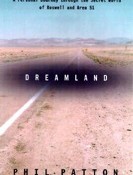
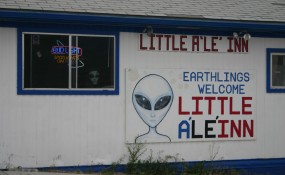

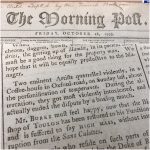
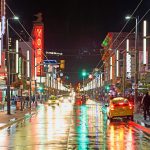
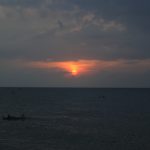
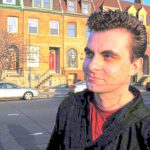



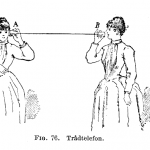




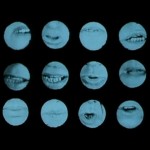




[…] ZOUCH, July 23, 2012. […]